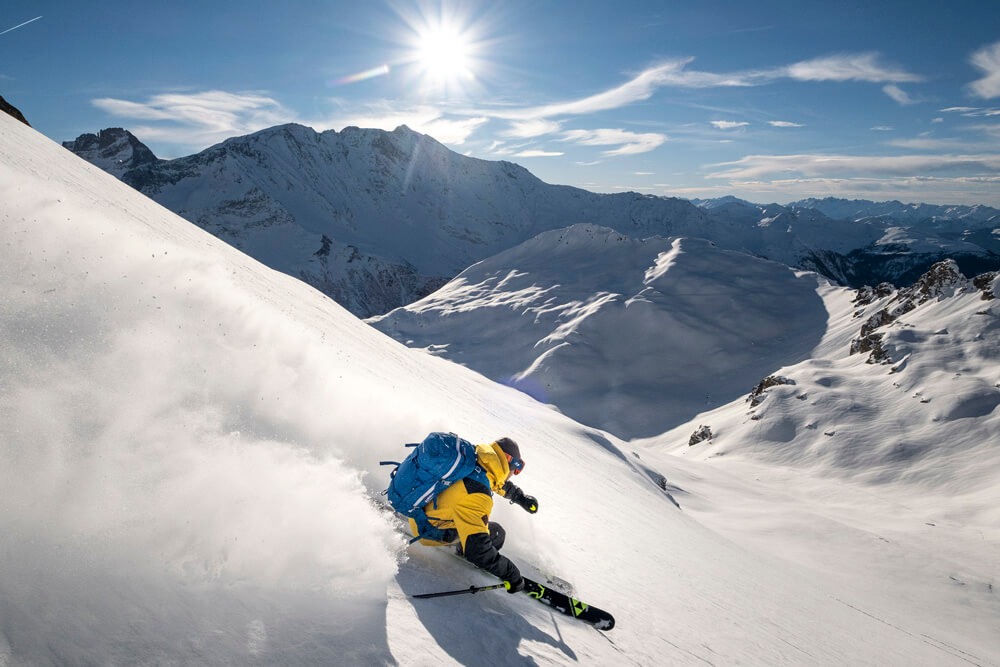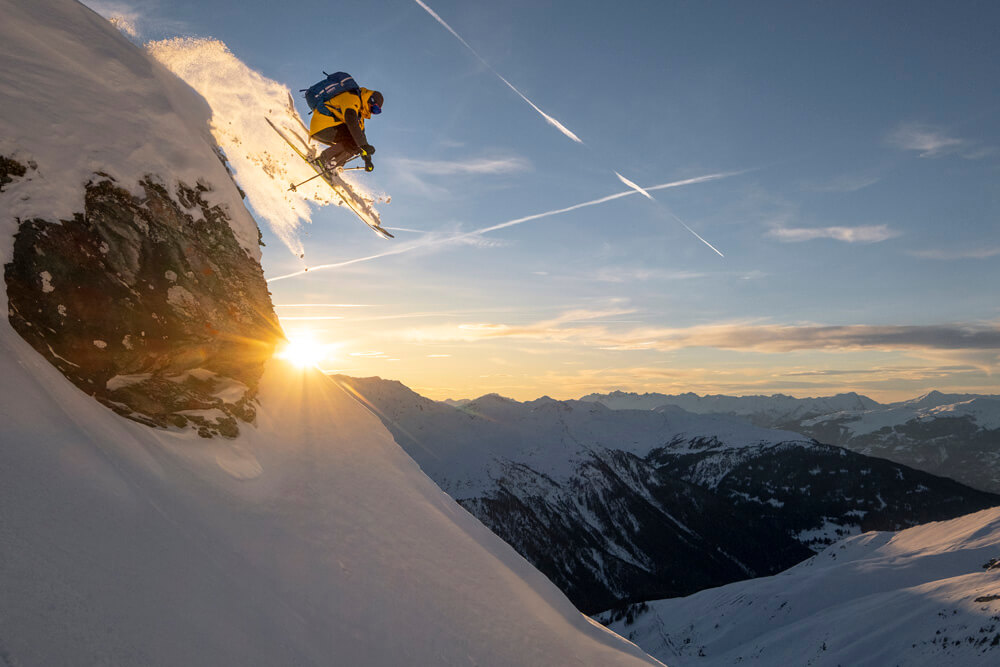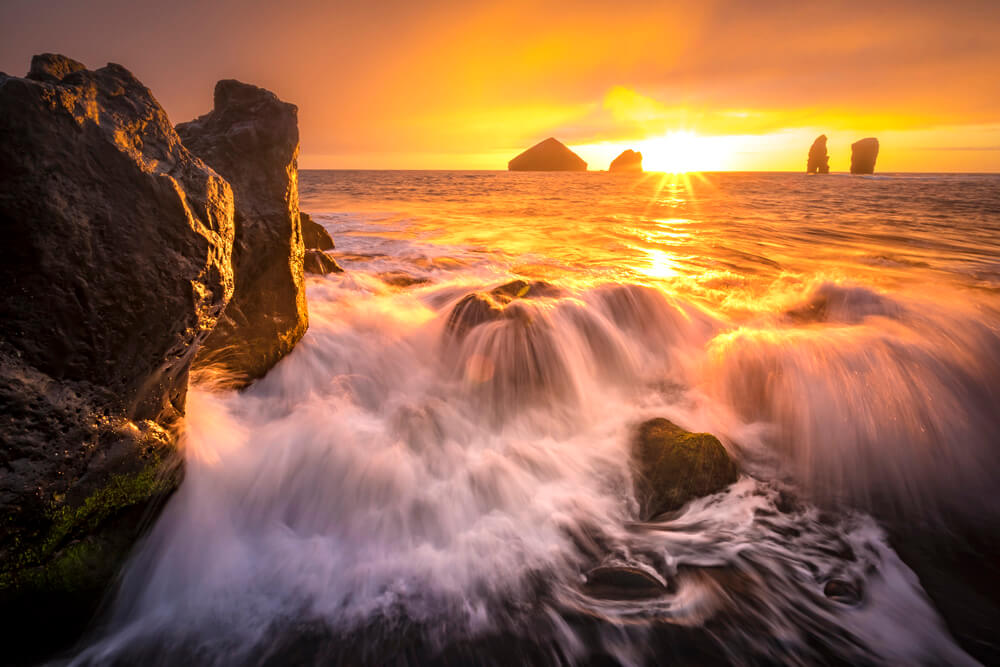Professional outdoor sport, landscape photographer and FUJIFILM x-photographer, Tristan Shu, talks about how there is always a wide-angle lens among his gear and why FUJINON XF10-24mmF4 R OIS WR is the perfect choice.
For the past 15 years, Tristan Shu has built a strong reputation as a professional outdoor sport and landscape photographer. His talents have earned him a long list of high-profile clients, including Adidas, Honda, Decathlon, Emporio Armani and many more. But where did it all begin for him and what advice can he give to others who want to follow in his footsteps?
“I decided to become a photographer when digital cameras came out,” recalls Tristan. “I was previously documenting my snowboard trips with disposable cameras and found it more fun to do it with a digital compact.
“I love photography for the thrill and the constantly renewed intellectual challenge. I like contrast, colour and impact. I also really love the teamwork that goes on with the athletes and everyone else involved in creating my pictures.”
As his love for photography developed, so did his gear. Tristan experimented with different systems until he arrived at FUJIFILM, where he has been happy ever since. “My love story began with the FUJIFILM X-T2, the first mirrorless camera I used, and I instantly liked it. Its ergonomics, overall performance, small size and excellent sensor got me, and the experience kept getting better with each new version: first the X-T3 and now the X-T4,” remembers Tristan.
Since then, he has also fallen in love with the FUJIFILM GFX 100 large format mirrorless camera. “It’s got an incredible stabilised sensor, more than capable autofocus and stellar picture quality,” he enthuses.
As a photographer that loves to capture the drama of action, Tristan has always been a huge fan of the XF10-24mmF4 R OIS. So, when he heard about the updated version – which is not only better quality but smaller, lighter and weather-resistant – there was no doubt it would be added to his set-up.
“When I shoot skiing, I need to be fairly close to the skier on the slope to capture it right, which means my camera often gets sprayed with snow. Having a weather-resistant lens makes the experience stress-free because I can just wipe off the snow with my gloves or a cloth. You’ll likely give up being outside before this lens does,” he chuckles.
So, what’s the secret behind such striking photography? Tristan tells us that it all comes down to two key ingredients: light and composition – both rely on solid preparation.
“Quite often, you see people arriving at a spot or a famous vista, pulling out their camera and snapping right away, but it’s very likely there is a better angle,” says Tristan. “I tend to walk around the scene or subject, getting higher or closer to the ground to see it from various angles. Once I have a decent plan of the angles that I’d like to cover, I start shooting.”
This is a philosophy that he translates into his professional work where, although they give the feeling of freedom and spontaneity, his images are often calculated. “For years, my recipe for capturing a great action shot in a great landscape has been to find the best possible composition, light and angle to do maximum justice to the athlete’s performance,” he explains. “I like to scout the area to find the best background or landscape. I use apps on my phone to see how the light is likely to affect the scene and where the sun is positioned at sunrise, sunset and in between.”
For Tristan, the XF10-24mmF4 R OIS WR takes an already fantastic lens and makes it even better. “I was a big fan of the first version and used it extensively – XF10-24mmF4 R OIS WR includes everything I liked and more. It’s lighter, more compact and weather-resistant, with no chromatic aberration and outstanding picture quality from the centre to the corner of the frame,” he enthuses.
“I often walk or ski for hours with my camera bag on my back. So, I love that despite being lighter and more compact, the XF10-24mmF4 R OIS WR doesn’t compromise picture quality in the slightest, compared to larger wide-angle DSLR lenses.
“I’d recommend this lens to anyone who wants to shoot with a wider angle of view. It’s easy to do and so much fun,” he concludes. “When you look at the world through a wide-angle lens, you can capture more of that fantastic landscape in front of your eyes.”
Want to create awesome wide-angle photography like Tristan? These tips will help you recreate his style…
Get close to the action
Wide-angle lenses can do a fantastic job of making the viewer feel like they are at the heart of the action. Making sure your camera is as close to the subject as possible is key to achieving results. This is summed up perfectly by a quote from the famous Hungarian-American war photographer and founder of Magnum Photos, Robert Capa, who said: “If your pictures aren’t good enough, you’re not close enough”.
Keep an eye on your composition
It’s hard to keep vertical edges looking vertical because of the way these lenses exaggerate perspective – try to keep the camera perfectly straight to avoid this effect. Also, pay attention to how you’re positioning the camera, since very small camera movements translate into big changes in composition in the finished picture.




















































